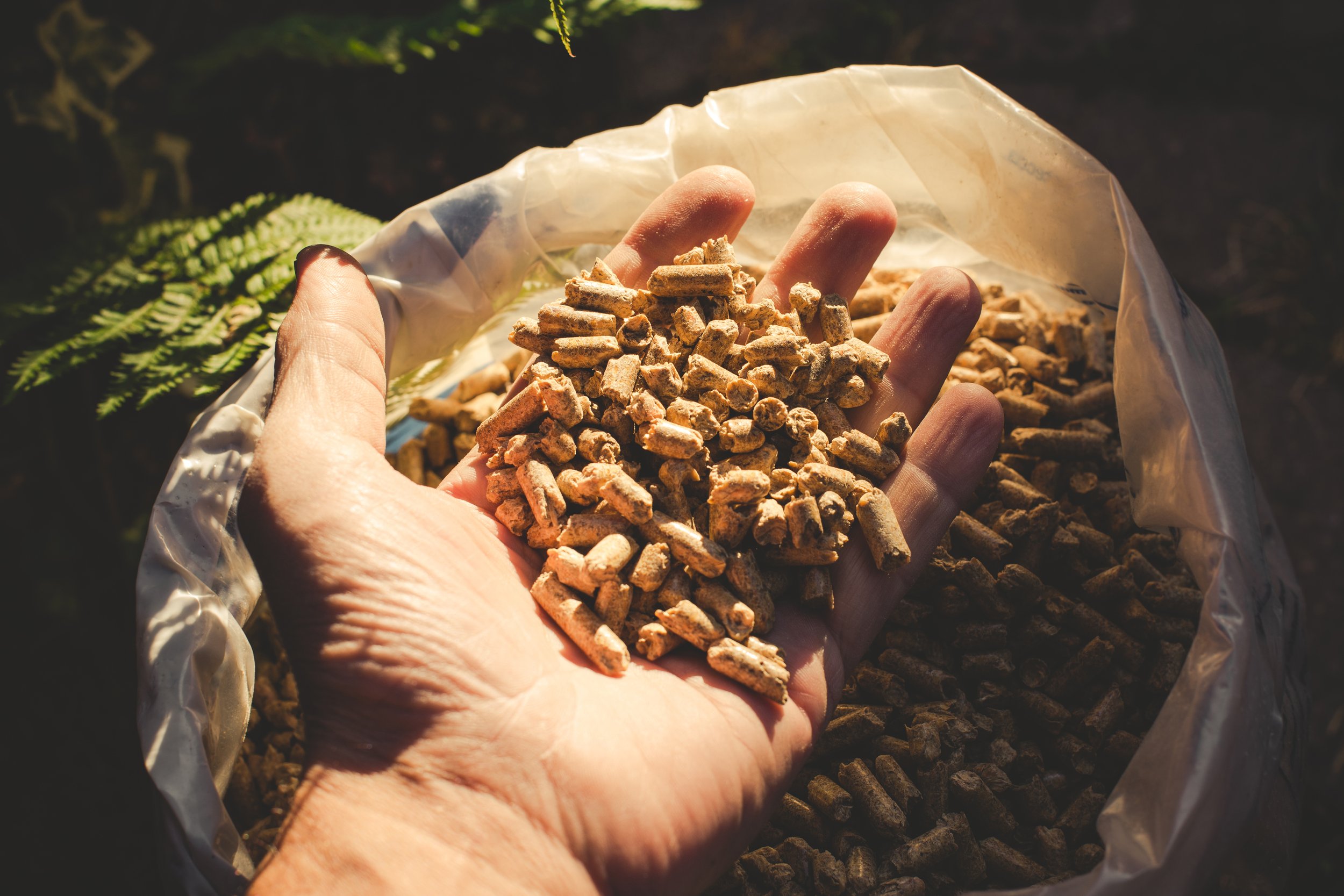
Wood pellets are biofuels made from compressed wood fibre. In British Columbia (BC), wood pellets are made primarily from the residuals left over from the sawmilling process when logs are converted into lumber and other high-value wood products.
-
Pellets can be made from any one of five general categories of biomass: industrial waste and co-products, food waste, agricultural residues, energy crops, and untreated lumber.[
-
Wood pellets are the most common type of pellet fuel and are generally made from compacted sawdust[3] and related industrial wastes from the milling of lumber, manufacture of wood products and furniture, and construction
-
Other industrial waste sources include empty fruit bunches, palm kernel shells, coconut shells, and tree tops and branches discarded during logging operations.
Pellets 101
-
Pellets are produced by compressing the wood material which has first passed through a hammer mill to provide a uniform dough-like mass.[15] This mass is fed to a press, where it is squeezed through a die having holes of the size required (normally 6 mm diameter, sometimes 8 mm or larger). The high pressure of the press causes the temperature of the wood to increase greatly, and the lignin plasticizes slightly, forming a natural "glue" that holds the pellet together as it cools.[9]
-
Pellets conforming to the norms commonly used in Europe (DIN 51731 or Ö-Norm M-7135) have less than 10% water content, are uniform in density (higher than 1 ton per cubic meter, thus it sinks in water)(bulk density about 0.6-0.7 ton per cubic meter), have good structural strength, and low dust and ash content.[8] Because the wood fibres are broken down by the hammer mill, there is virtually no difference in the finished pellets between different wood types.[citation needed] Pellets can be made from nearly any wood variety, provided the pellet press is equipped with good instrumentation, the differences in feed material can be compensated for in the press regulation
-
There are three general types of pellet heating appliances: free standing pellet stoves, pellet stove inserts and pellet boilers.
Pellet stoves work like modern furnaces, where fuel, wood, or other biomass pellets, is stored in a storage bin called a hopper. The hopper can be located on the top of the appliance, the side of it or remotely. A mechanical auger automatically feeds pellets into a burn pot. From there, they burn at high temperatures with minimal emissions. Heat-exchange tubes send air heated by fire into room. Convection fans circulate air through heat-exchange tubes and into room. Pellet stoves have circuit boards inside that act like a thermostat and to regulate temperature.[41]
A pellet stove insert is a stove that is inserted into an existing masonry or prefabricated wood fireplace, similar to a fireplace insert.
Pellet boilers are standalone central heating and hot water systems designed to replace traditional fossil fuel systems in residential, commercial and institutional applications. Automatic or auto-pellet boilers include silos for bulk storage of pellets, a fuel delivery system that moves the fuel from the silo to the hopper, a logic controller to regulate temperature across multiple heating zones and an automated ash removal system for long-term automated operations.
Current Pellet Market
Pellet Types
-
Great for cooking poultry and salmon.
-
Works well with Pork, Seafood and Lamb.
-
A good allrounder.
-
For a strong, smokey flavor.
-
Works well with Pork and BBQ Ribs.
-
Nice for cooking vegetables and cheese.
-
Particularly suited for red meats.
-
The foundation of BBQ Wood Pellets.
-
Best Suited for cooking poultry.
-
Especially nice for game and red meats.
-
Red Meat & Fish.





















